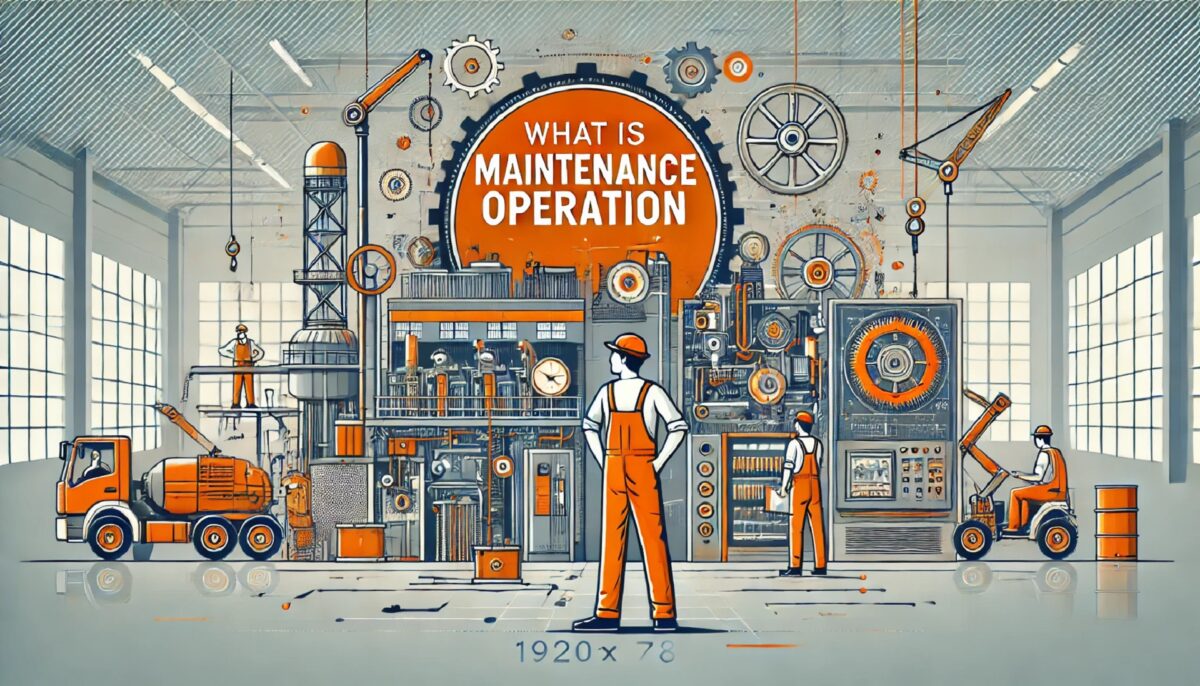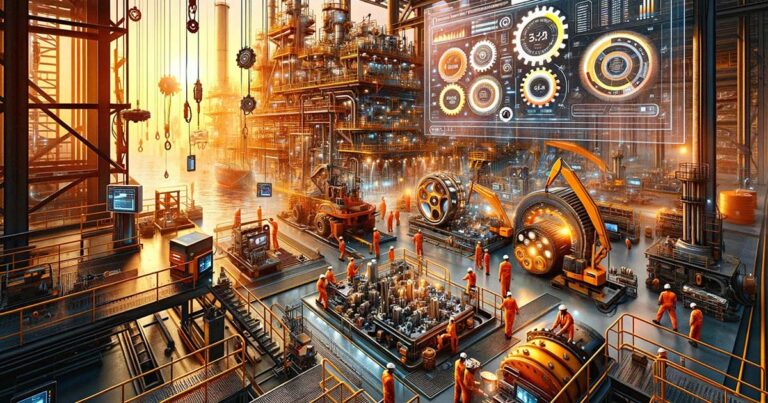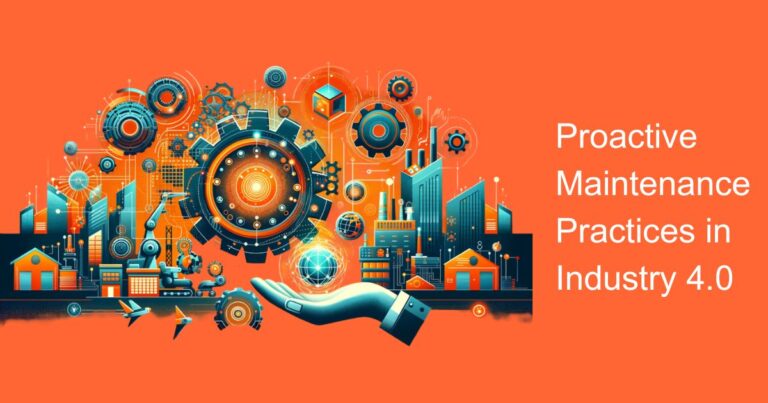Introduction
In industries ranging from manufacturing to transportation, maintenance operations play a crucial role in ensuring the efficiency, reliability, and safety of equipment and infrastructure. As organizations increasingly prioritize operational uptime and cost optimization, maintenance operations have evolved into a key strategic function. In this blog, we will explore what is maintenance operation and, its importance, types, and how it is applied across industries, with a particular focus on the Indian context.
What is Maintenance Operation?
Maintenance operation refers to the set of activities and processes aimed at ensuring that equipment, machinery, infrastructure, and facilities are operating efficiently and safely. The primary goal is to prevent unexpected breakdowns, reduce downtime, and extend the lifecycle of assets.
In simpler terms, maintenance operations ensure that the machines and systems an organization depends on continue to function as required, minimizing the risk of failures that can lead to production delays, safety issues, or financial losses. These operations include inspection, cleaning, repair, servicing, and replacement of parts or entire systems.
Key Functions of Maintenance Operations:
- Inspection of equipment to detect any signs of wear and tear.
- Regular servicing and adjustments to keep machinery running efficiently.
- Repair and replacement of parts that have become damaged or obsolete.
- Ensuring compliance with safety regulations and standards.
Importance of Maintenance Operations
The importance of effective maintenance operations cannot be overstated. For any organization that relies on machinery, equipment, or infrastructure, well-maintained assets are critical to business success. Here are some of the reasons why maintenance operations are essential:
Maximizing Equipment Uptime:
Unplanned downtime can be disastrous for businesses, leading to lost productivity and revenue. Maintenance operations help minimize equipment failures by addressing issues before they escalate.
Cost Optimization:
Regular maintenance can reduce the overall cost of repairs by preventing major breakdowns. Small, routine fixes are less expensive than emergency repairs or replacements of major components.
Extending Asset Lifespan:
By keeping equipment in good condition, maintenance operations help extend the useful life of assets, delaying the need for costly replacements.
Ensuring Safety:
Neglecting maintenance can lead to hazardous conditions for workers and operations. Proper maintenance ensures that equipment meets safety standards, reducing the risk of accidents.
Compliance with Regulations:
Many industries are subject to regulatory standards for equipment maintenance. Non-compliance can lead to penalties, legal issues, and operational shutdowns. Maintenance operations ensure that organizations remain compliant.
Types of Maintenance Operations
Maintenance operations can be broadly classified into several types based on the strategy and timing of the interventions:
Preventive Maintenance:
Preventive maintenance involves routine checks and services performed at regular intervals to prevent equipment failure. The idea is to detect potential issues early and address them before they turn into major problems.
Example in India: In the power generation sector, companies often conduct preventive maintenance of turbines, generators, and transformers to ensure continuous electricity supply.
Corrective Maintenance:
Also known as “reactive maintenance,” this type of maintenance is performed after equipment has already failed. Corrective maintenance focuses on fixing the issue and restoring the equipment to working condition.
Example in India: In industries like manufacturing, corrective maintenance is common when assembly line equipment breaks down, requiring immediate repair to resume production.
Predictive Maintenance:
Predictive maintenance leverages data and analytics to predict when equipment might fail, allowing for timely intervention. It uses technologies like IoT sensors, machine learning, and AI to monitor equipment performance and identify patterns that indicate potential failures.
Example in India: The Indian Railways is increasingly adopting predictive maintenance technologies to monitor train engines and tracks, aiming to reduce breakdowns and accidents.
Condition-Based Maintenance:
Condition-based maintenance (CBM) relies on real-time data from equipment to determine when maintenance is needed. Instead of scheduling maintenance at fixed intervals, CBM is performed when the data indicates that equipment performance is deteriorating.
Example in India: The oil and gas industry in India uses condition-based maintenance to monitor pipelines and drilling equipment to prevent costly shutdowns.
Planned Maintenance:
Planned maintenance involves scheduling maintenance activities in advance, based on equipment usage patterns or manufacturer recommendations. This can include overhauls, part replacements, and detailed inspections.
Example in India: Planned maintenance is widely used in the Indian automotive industry, where vehicles undergo scheduled servicing after a certain number of kilometers or operating hours.
Maintenance Operations in India: Industry Insights
India’s industrial landscape is diverse, with sectors like manufacturing, energy, transportation, and infrastructure heavily reliant on effective maintenance operations. With the country’s rapid industrial growth, the demand for advanced maintenance strategies is increasing.
Manufacturing:
India’s manufacturing sector is one of the largest contributors to the economy, with industries like textiles, automotive, and electronics driving growth. Effective maintenance operations are critical in this sector to ensure the continuous operation of assembly lines and machinery.
In the automotive sector, for example, companies like Tata Motors and Maruti Suzuki implement extensive preventive and predictive maintenance strategies to avoid production delays.
Energy and Utilities:
The energy sector, including power generation and oil & gas, relies on large-scale infrastructure and complex equipment. Maintenance operations are essential to ensure the reliability of power plants, pipelines, and refineries.
In India, the focus is increasingly shifting toward predictive maintenance, with power companies using IoT and AI to monitor equipment like turbines and transformers. The shift to renewable energy sources such as wind and solar also requires specialized maintenance operations for the equipment involved.
Transportation:
India’s transportation network is vast, covering roads, railways, and airways. The Indian Railways, for instance, is one of the largest railway networks in the world and requires extensive maintenance to ensure safe and reliable operations.
Railways, airlines, and logistics companies in India are adopting advanced maintenance strategies like predictive and condition-based maintenance to minimize downtime and improve safety.
Infrastructure:
India’s ambitious infrastructure projects, including highways, bridges, and smart cities, require ongoing maintenance to prevent degradation and ensure longevity. Maintenance operations in this sector are critical to keeping India’s infrastructure resilient against natural wear and tear.
Best Practices for Effective Maintenance Operation
Regular Training and Skill Development:
Technicians and maintenance personnel should be regularly trained on the latest equipment and maintenance practices. As maintenance operations become more complex with the advent of digital tools, continuous skill development is essential.
Implementing Maintenance Management Systems (MMS):
An MMS helps organizations plan, track, and optimize maintenance operations. It also ensures that all maintenance activities are documented, which is essential for compliance and regulatory reporting.
Embracing Technology:
Leveraging IoT sensors, AI, and machine learning can help predict failures before they occur. These technologies enable organizations to move from reactive to predictive maintenance, improving overall efficiency.
Data-Driven Decisions:
Maintenance operations should be driven by data. By analyzing historical maintenance data and real-time equipment performance, organizations can optimize maintenance schedules and prioritize critical assets.
Integrating with Asset Management:
Maintenance operations should be integrated with overall asset management to ensure that all maintenance activities are aligned with business objectives. This holistic approach helps extend asset lifecycles and reduces costs.
Challenges and Opportunities in Indian Maintenance Operations
India’s industrial and infrastructure sectors face several challenges when it comes to maintenance operations:
Skills Gap:
There is a shortage of skilled technicians and engineers trained in advanced maintenance practices, particularly in rural areas. Bridging this gap through training and education is critical.
Limited Adoption of Technology:
While large organizations are adopting predictive and condition-based maintenance, many small and medium-sized enterprises (SMEs) still rely on traditional reactive maintenance methods. Encouraging these businesses to adopt modern maintenance technologies presents a significant opportunity.
Cost Constraints:
For many Indian companies, particularly SMEs, the cost of implementing advanced maintenance systems is a barrier. However, with government initiatives like the “Make in India” campaign and Industry 4.0, there is potential for increased technology adoption in the coming years.
Regulatory Compliance:
India’s regulatory landscape for safety and maintenance is evolving. Ensuring compliance with industry standards and government regulations can be a challenge, especially for smaller companies that lack dedicated compliance teams.
The Future of Maintenance Operations: Digitalization and Industry 4.0
The future of maintenance operations in India is being shaped by digital transformation. Industry 4.0 technologies, including IoT, AI, and machine learning, are revolutionizing the way maintenance is performed.
Predictive maintenance, in particular, is expected to become more widespread as organizations increasingly recognize its benefits in reducing downtime and improving efficiency. The use of digital twins—virtual replicas of physical assets—enables real-time monitoring and predictive analytics, allowing for more precise maintenance planning.
India’s government is also playing a role in promoting advanced maintenance practices. Initiatives like “Smart Cities” and “Digital India” aim to modernize the country’s infrastructure, providing further impetus for the adoption of cutting-edge maintenance technologies.
Conclusion
Maintenance operations are a critical component of any industrial or infrastructure-focused organization, ensuring equipment reliability, safety, and cost efficiency. In India, where rapid industrialization and urbanization are taking place, the importance of effective maintenance cannot be overstated.
By embracing best practices and adopting advanced technologies like predictive maintenance, Indian industries can not only reduce costs but also improve operational efficiency and competitiveness in a global marketplace. As the country moves toward digitalization and Industry 4.0, the future of maintenance operations looks promising, with increased reliance on data-driven decision-making and automated maintenance strategies.
Maintaining operational excellence will depend on how well Indian industries adapt to these new trends, overcoming challenges like the skills gap and cost barriers. With the right strategies, organizations in India can ensure their assets remain in optimal condition, minimizing downtime and maximizing productivity. By understanding what maintenance operation entails and implementing best practices, organizations can create a safer, more reliable, and cost-effective operational environment that benefits both employees and the bottom line.








